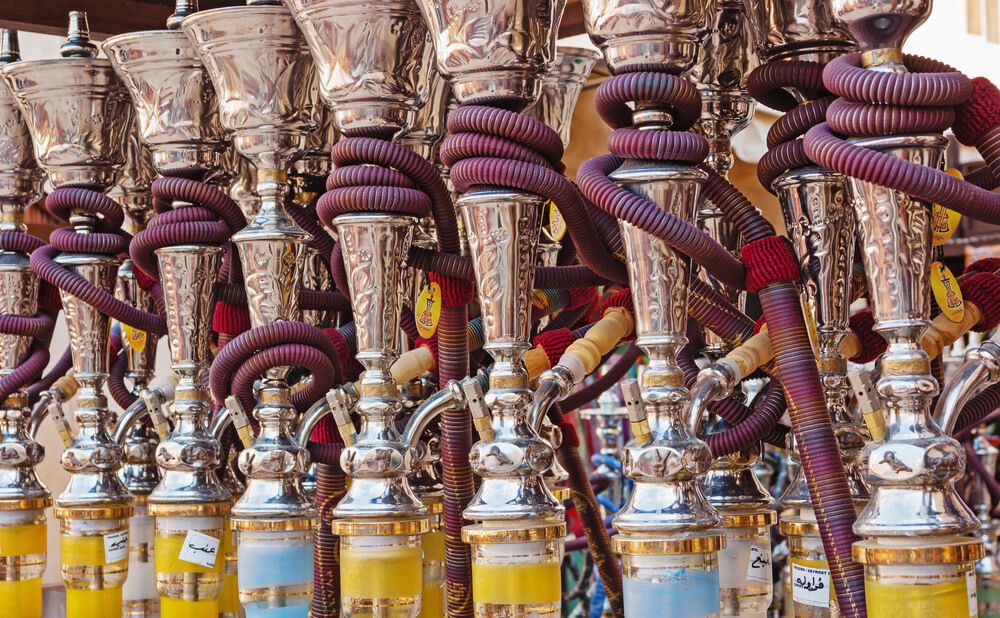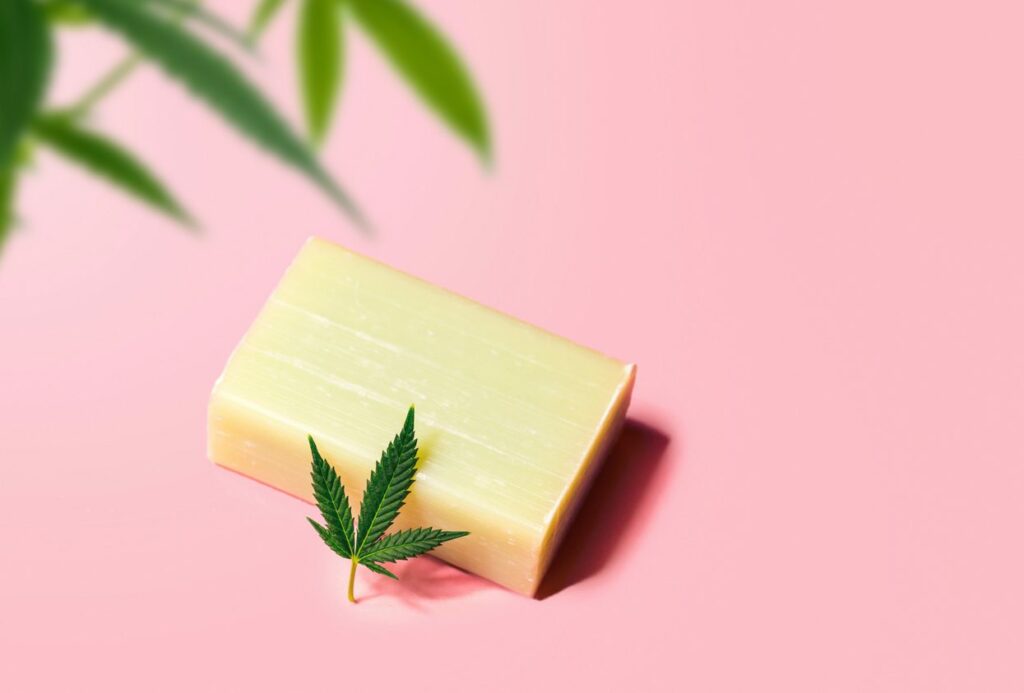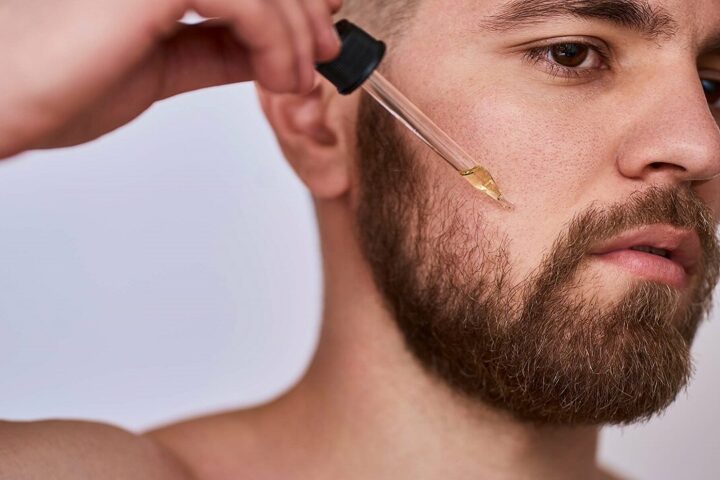Shisha Pipes
What is Shisha Pipes
Shisha pipes, also known as hookahs or water pipes, are devices used for smoking flavored tobacco, also known as shisha. Shisha pipes have been used for centuries in the Middle East and have since become popular worldwide for their smooth and flavorful smoking experience.
Shisha pipes consist of several components, including a bowl for holding the shisha, a stem with a valve for controlling airflow, a hose for smoking, and a base filled with water. The water in the base cools and filters the smoke, making it smoother and more enjoyable to inhale.
The bowl on top of the stem is filled with shisha tobacco, which is typically mixed with flavorings such as fruit or mint. The shisha is then heated with hot coals placed on top of the bowl. As the tobacco heats up, smoke is produced and drawn through the stem and into the base, where it is cooled and filtered by the water. The smoker then inhales the smoke through the hose and mouthpiece.
Shisha pipes come in various sizes and designs, from small portable versions to large ornate models that are often used in social settings. Some shisha pipes also come with multiple hoses, allowing multiple users to smoke at the same time.
While shisha smoking can be a relaxing and enjoyable experience, it is important to note that it is still a form of smoking and can be harmful to your health. Shisha smoking can expose you to the same harmful chemicals found in cigarette smoke, including tar and carbon monoxide. It is also important to use a clean and properly functioning shisha pipe to avoid inhaling harmful contaminants.
In conclusion,
shisha pipes are devices used for smoking flavored tobacco that have been popular for centuries in the Middle East and are now enjoyed worldwide. Shisha pipes consist of several components and come in various sizes and designs. While shisha smoking can be enjoyable, it is important to use caution and understand the potential health risks associated with smoking.
How to Use Shisha Pipes
Using a shisha pipe can be a relaxing and enjoyable experience, but it’s important to use the device correctly to ensure a smooth and flavorful smoking experience. Here is a step-by-step guide on how to use a shisha pipe:
Prepare the Shisha Tobacco
Choose your preferred flavor of shisha tobacco and prepare it by removing the stems and breaking it up into small pieces. Mix the shisha with flavorings such as fruit or mint, if desired. Fill the bowl on top of the stem with the shisha, being careful not to overpack it.
Prepare the Coals
Heat up a few pieces of natural coconut coals on a stove or charcoal heater until they are red hot. Be sure to use natural coals, as they burn cleaner and produce less ash than other types of coals.
Assemble the Shisha Pipe
Place the stem into the base of the shisha pipe and fill the base with water until it covers the stem by about an inch. Make sure the valve on the stem is closed before attaching the hose.
Heat the Shisha
Place the red-hot coals on top of the bowl and allow them to heat the shisha for a few minutes. Avoid inhaling until the shisha is producing smoke.
Smoke the Shisha
Once the shisha is producing smoke, inhale the smoke through the hose and mouthpiece. Take slow and steady puffs to avoid overheating the shisha and ensure a smooth smoking experience.
Control the Airflow
Adjust the valve on the stem to control the airflow and adjust the intensity of the smoke. Open the valve for a stronger hit or close it for a milder experience.
Replace the Coals
As the coals burn out, replace them with fresh ones to keep the shisha tobacco burning and producing smoke.
Clean the Shisha Pipe
After using the shisha pipe, clean it thoroughly to remove any residue and prevent contamination. Disassemble the pipe and wash the parts with warm water and soap. Allow the pipe to dry completely before using it again.
In conclusion,
using a shisha pipe can be a relaxing and enjoyable experience if done correctly. Remember to prepare the shisha tobacco, heat the coals, assemble the shisha pipe, control the airflow, and replace the coals as necessary. Always use caution when smoking and clean the shisha pipe thoroughly after use to ensure a safe and enjoyable smoking experience.
What are the Benefits of Shisha Pipes
Shisha pipes, also known as hookahs or water pipes, have been used for centuries in various parts of the world, particularly in the Middle East and South Asia. Shisha smoking involves heating tobacco, often mixed with flavorings, and passing the resulting smoke through water before inhaling it. Although shisha smoking is often seen as a social activity, there are several benefits associated with using shisha pipes. In this comprehensive guide, we will explore some of the benefits of shisha pipes.
Relaxation and stress relief
One of the main benefits of using shisha pipes is the relaxation and stress relief it provides. The process of smoking shisha can be very calming, and the deep inhales and exhales can help to reduce stress levels. The flavors of the tobacco, combined with the soothing sound of bubbling water, can create a very relaxing environment, which can be particularly beneficial for those who suffer from anxiety or stress.
Social activity
Shisha smoking is often seen as a social activity, particularly in the Middle East and South Asia. People gather around the shisha pipe, taking turns to inhale the smoke and engage in conversation. This can be a great way to meet new people and form connections, particularly in cultures where hospitality and socializing are highly valued.
Variety of flavors
Shisha tobacco is available in a wide range of flavors, from fruity and sweet to spicy and savory. This allows users to customize their smoking experience and try new flavors. Some popular shisha flavors include apple, mint, grape, and rose.
Less harmful than cigarettes
While smoking shisha is not without risks, it is generally considered to be less harmful than smoking cigarettes. The smoke from the shisha is filtered through water, which can help to remove some of the harmful toxins and chemicals. Additionally, shisha smoking is typically done in a more leisurely manner than cigarette smoking, which means users are inhaling less smoke overall.
Low nicotine content
Shisha tobacco typically contains less nicotine than cigarettes, which can be beneficial for those who are trying to quit smoking. While shisha smoking is not completely nicotine-free, it may be a good option for those who are trying to wean themselves off nicotine.
Alternative to alcohol
Shisha smoking can be a great alternative to alcohol, particularly for those who do not drink or are looking to cut down on their alcohol consumption. The social aspect of shisha smoking can provide a similar sense of relaxation and enjoyment to drinking alcohol, without the negative side effects associated with excessive alcohol consumption.
Aesthetic appeal
Shisha pipes are often very beautiful and ornate, with intricate designs and patterns. This can add an aesthetic appeal to any social gathering or event, making shisha smoking a great addition to a party or celebration.
In conclusion,
while there are risks associated with shisha smoking, there are also several benefits. Shisha smoking can provide relaxation, stress relief, socialization, and a wide range of flavors, all in a less harmful manner than cigarette smoking. Additionally, shisha smoking can be a great alternative to alcohol and can add an aesthetic appeal to any social gathering or event. However, it is important to be aware of the risks associated with shisha smoking and to use shisha in moderation.
What to Look for when shopping for Shisha Pipes
If you’re interested in purchasing a shisha pipe for personal use or for entertaining guests, there are several factors to consider before making a purchase. In this comprehensive guide, we will explore some key considerations to keep in mind when shopping for shisha pipes.
Quality and Durability
When shopping for a shisha pipe, it’s important to consider the quality and durability of the materials used to make it. Look for pipes made from high-quality materials like stainless steel, brass, or copper, as these materials are durable and long-lasting. You should also check for any visible signs of wear and tear, such as rust or cracks, as these can affect the overall quality of the pipe.
Size and Portability
Shisha pipes come in a variety of sizes, from small and portable to large and stationary. Consider how and where you plan to use your shisha pipe. If you plan to use it on-the-go or in different locations, a smaller, more portable shisha pipe may be a better option. Conversely, if you plan to use your shisha pipe in a single location, a larger, more elaborate pipe may be more suitable.
Design and Aesthetics
Shisha pipes are available in a wide range of designs and aesthetics, from traditional Middle Eastern styles to modern, contemporary designs. Consider the overall aesthetic of your home or entertaining space and choose a shisha pipe that complements it. Additionally, consider any decorative elements, such as intricate patterns or engravings, that may add to the overall aesthetic appeal of the pipe.
Ease of Use and Cleaning
When shopping for a shisha pipe, consider how easy it is to use and clean. Look for pipes with a simple, intuitive design that is easy to assemble and disassemble. Additionally, look for pipes with removable components, such as the bowl and hose, that make cleaning easier and more thorough.
Compatibility with Accessories and Flavors
Shisha pipes can be customized with a variety of accessories and flavors, such as different bowls, hoses, and tobacco flavors. When shopping for a shisha pipe, consider its compatibility with these accessories and flavors, and whether you plan to customize your pipe in the future.
Price
Shisha pipes can range in price from relatively inexpensive to very expensive, depending on factors like quality, design, and materials. Consider your budget when shopping for a shisha pipe, but also keep in mind that a higher-priced pipe may offer better quality and longevity.
In conclusion,
when shopping for a shisha pipe, consider factors such as quality and durability, size and portability, design and aesthetics, ease of use and cleaning, compatibility with accessories and flavors, and price. By keeping these considerations in mind, you can find a shisha pipe that suits your needs and preferences, and provides an enjoyable smoking experience.
FAQs-Shisha Pipes
Is shisha illegal in UK?
No, shisha, also known as hookah or water pipe smoking, is not illegal in the UK. However, there are regulations and restrictions in place regarding its use. In the UK, individuals must be 18 years or older to purchase or consume shisha products. Shisha venues must also comply with specific licensing requirements and adhere to regulations related to health and safety, including ensuring proper ventilation and maintaining a smoke-free environment. It’s important to note that individual establishments may have their own rules regarding shisha smoking, such as designated smoking areas or restrictions on age and entry. It’s always advisable to check and comply with local laws and regulations regarding shisha use in your specific area.
Is shisha as bad as a cigarette?
Comparing shisha to cigarettes is complex, as both have their own set of health risks. While both involve smoking and inhaling tobacco, there are some differences in the way they are consumed. Shisha typically involves smoking flavored tobacco through a water pipe, while cigarettes involve smoking processed tobacco wrapped in paper. Shisha smoking sessions tend to be longer, lasting for around 1 hour or more, compared to the shorter duration of smoking a cigarette. However, it’s worth noting that shisha smoke passes through water before inhalation, which may slightly reduce the concentration of certain toxins compared to cigarette smoke. Nevertheless, shisha smoking still poses health risks, including exposure to harmful chemicals, carbon monoxide, and nicotine addiction. It’s important to understand that any form of tobacco smoking carries potential health consequences, and quitting smoking altogether is the best way to reduce associated risks
What is the point of shisha pipe?
The main purpose of a shisha pipe, also known as a hookah or water pipe, is to enjoy the social and cultural experience of smoking flavored tobacco. Shisha smoking is often considered a communal activity, where friends or family gather around the pipe to share conversations, relax, and unwind. The water pipe is designed to filter the smoke through water, which is believed to cool and purify the smoke before inhalation, providing a smoother and more enjoyable smoking experience. The flavored tobacco, known as shisha or hookah tobacco, comes in various flavors, adding an element of taste and aroma to the smoke. The shisha pipe is also visually appealing, often decorated with intricate designs, making it an aesthetic centerpiece during social gatherings.
Is A shisha the same as a vape?
No, a shisha (or hookah) and a vape are not the same. While both involve inhaling substances, there are significant differences between the two.A shisha pipe is a traditional water pipe used for smoking flavored tobacco. It typically consists of a bowl where the tobacco is placed, a body or stem, a water-filled base, and a hose for inhaling the smoke. The tobacco is heated with charcoal, and the smoke is drawn through the water before being inhaled. Shisha smoking sessions are usually longer and are often seen as a social or cultural activity.On the other hand, a vape, or electronic cigarette, is a battery-operated device that heats a liquid (often containing nicotine) into an aerosol, which is then inhaled. Vapes come in various shapes and sizes, but they generally consist of a battery, a heating element, and a cartridge or tank to hold the e-liquid. Vaping has gained popularity as an alternative to traditional tobacco smoking, with different e-liquids available in various flavors and nicotine strengths.
Is shisha more harmful than CIG?
Comparing the harmfulness of shisha and cigarettes is a complex matter as both have their own health risks. Shisha smoke is generally smoother due to the water filtration, which may create a perception that it is less harmful. However, shisha smoking sessions are typically longer, resulting in more extended exposure to smoke and potentially higher levels of toxic substances. Additionally, shisha smoke contains many of the same harmful chemicals found in cigarette smoke, such as carbon monoxide, heavy metals, and carcinogens. Furthermore, shisha smoking often involves shared mouthpieces, increasing the risk of spreading infectious diseases. Overall, both shisha and cigarette smoking have detrimental effects on health, including an increased risk of respiratory and cardiovascular diseases, lung cancer, and addiction to nicotine. It is essential to understand that any form of smoking carries potential health consequences, and quitting smoking altogether is the best way to minimize associated risks.
What are the side effects of shisha?
Shisha smoking can have several side effects on the body. Some common side effects include:
- Respiratory issues: Shisha smoke contains harmful substances, including carbon monoxide and toxins, which can irritate the respiratory system and lead to shortness of breath, coughing, and wheezing. Prolonged shisha smoking can also increase the risk of respiratory infections.
- Increased heart rate and blood pressure: The nicotine present in shisha tobacco can cause an increase in heart rate and blood pressure, putting additional strain on the cardiovascular system.
- Dental and oral health problems: Shisha smoking can contribute to oral health issues such as stained teeth, bad breath, and an increased risk of gum disease and tooth decay.
- Addiction to nicotine: Shisha tobacco contains nicotine, which is highly addictive. Regular shisha smoking can lead to nicotine dependence and make it challenging to quit.
- Increased risk of certain cancers: Shisha smoke contains carcinogens that can increase the risk of developing various types of cancers, including lung, mouth, throat, and esophageal cancer.
- Carbon monoxide poisoning: Shisha smoking produces carbon monoxide, a toxic gas that can be absorbed into the bloodstream, leading to symptoms such as dizziness, headache, nausea, and, in severe cases, carbon monoxide poisoning.
How many times is shisha worse than cigarettes?
Determining the exact comparison of how many times shisha smoking is worse than cigarettes is challenging due to various factors involved, such as smoking habits, frequency, duration of use, and individual susceptibility to health risks. However, it is generally accepted that shisha smoking carries significant health risks similar to, if not greater than, cigarette smoking. The prolonged duration of shisha sessions and the larger volume of smoke inhaled can result in increased exposure to harmful substances, including carbon monoxide, toxins, and carcinogens. Additionally, the use of shared mouthpieces in shisha smoking can increase the risk of transmitting infectious diseases. While the exact quantitative comparison may vary, it is crucial to understand that both shisha and cigarette smoking are harmful to health, and quitting smoking altogether is the best choice to minimize associated risks.
How long does shisha stay in your body?
The length of time that shisha stays in your body can vary depending on various factors, including the frequency and duration of shisha smoking, the amount of smoke inhaled, and individual metabolism. The chemicals present in shisha smoke, such as nicotine and other toxins, can be absorbed into the bloodstream and metabolized by the body. Nicotine, for example, has a half-life of around 2 hours, meaning it takes approximately that amount of time for the body to eliminate half of the nicotine present. However, traces of nicotine and other substances may still be detectable in bodily fluids, such as urine or saliva, for several days after shisha smoking. It’s important to note that the long-term effects of shisha smoking on the body can persist even after the substances have been metabolized and eliminated. It is advisable to quit smoking altogether to reduce the health risks associated with shisha and to allow the body to recover.
Is shisha bad for your sperm?
There is evidence to suggest that shisha smoking can have negative effects on male fertility and sperm health. The chemicals present in shisha smoke, including nicotine, carbon monoxide, and various toxic substances, can potentially harm sperm quality and function. Studies have indicated that shisha smoking may lead to decreased sperm count, reduced sperm motility (movement), and abnormal sperm shape (morphology). Additionally, the harmful effects of shisha smoke on blood vessels and oxidative stress can further impact sperm health. It is important for individuals concerned about their fertility or planning to conceive to consider the potential risks associated with shisha smoking and make informed decisions regarding their health. Quitting smoking altogether, including shisha smoking, is advisable to optimize overall fertility and reproductive health.
Is shisha more cancerous than cigarettes?
Comparing the cancer risks of shisha and cigarettes is complex, as both forms of smoking involve inhaling tobacco smoke and carry their own set of health risks. While it is difficult to make a definitive comparison, shisha smoking has been associated with an increased risk of certain types of cancers, including lung, mouth, throat, and esophageal cancer. Shisha smoke contains many of the same harmful chemicals found in cigarette smoke, such as carcinogens and toxins. Moreover, the prolonged duration of shisha smoking sessions and the larger volume of smoke inhaled may contribute to higher exposure to these harmful substances. However, it’s important to note that cigarette smoking has been extensively studied and established as a leading cause of various cancers. Quitting smoking altogether, whether it’s shisha or cigarettes, is the best approach to reduce the risk of cancer and improve overall health.
Does shisha affect brain cells?
Shisha smoking can have adverse effects on brain cells and overall brain health. The chemicals present in shisha smoke, including nicotine, carbon monoxide, and other toxins, can have neurotoxic effects. Nicotine, in particular, can cross the blood-brain barrier and bind to nicotine receptors in the brain, leading to various physiological and cognitive effects. Chronic shisha smoking has been associated with negative impacts on cognitive function, memory, attention, and overall brain performance. Additionally, the carbon monoxide present in shisha smoke can reduce the oxygen supply to the brain, further compromising brain cell function and health. It is important to be aware of these potential effects and consider the risks to brain health when making decisions about shisha smoking. Quitting smoking altogether is advisable to protect and promote brain health.
What are the side effects of shisha to a man?
Shisha, also known as hookah or waterpipe, can have several side effects on men. The most immediate effect is the inhalation of toxic chemicals produced by burning tobacco, which can lead to respiratory problems such as coughing, wheezing, and shortness of breath. Regular shisha smoking can also increase the risk of developing lung cancer, heart disease, and other serious illnesses. Additionally, shisha smoke contains carbon monoxide, which can impair the oxygen-carrying capacity of the blood, affecting overall cardiovascular health. Prolonged use of shisha may also lead to addiction and dependence on nicotine, causing withdrawal symptoms when trying to quit. It is crucial for men to be aware of these potential side effects and make informed decisions regarding their health and well-being.
What is the difference between shisha and hookah?
There is actually no significant difference between shisha and hookah—they refer to the same thing. The term “hookah” originated from the Indian subcontinent and is commonly used in the Western world, while “shisha” is more commonly used in Middle Eastern countries. Both terms refer to a waterpipe device used for smoking flavored tobacco. The tobacco is heated with charcoal, and the smoke passes through water before being inhaled through a hose or tube. So, whether you refer to it as shisha or hookah, it pertains to the same traditional smoking apparatus.
What is shisha Flavour made of?
Shisha flavor, also known as shisha tobacco or maassel, is made from a combination of ingredients. The primary component is typically a blend of tobacco leaves, often sourced from various regions such as Turkey, Egypt, or the United States. These leaves are processed and mixed with molasses or honey to enhance the flavor and provide a moist texture. To create different flavors, various natural or artificial flavorings are added, including fruits, spices, herbs, and extracts. These flavorings can range from traditional options like apple, mint, or grape to more exotic choices such as mango, rose, or chocolate. It’s important to note that while the flavorings may provide different tastes, shisha tobacco still contains nicotine and other potentially harmful chemicals, so its usage should be approached with caution.
How much nicotine is in a shisha?
The amount of nicotine in shisha can vary depending on several factors, including the brand, type of tobacco, and the specific flavor. On average, a typical shisha session lasting around 60 minutes can expose a person to nicotine equivalent to smoking several cigarettes. However, it’s important to note that the actual nicotine content can vary significantly, ranging from relatively low levels to higher concentrations. Some shisha tobacco products are labeled as “nicotine-free,” but even in those cases, there may still be trace amounts of nicotine present. It’s crucial for individuals to be aware of the potential nicotine content in shisha and the associated health risks, especially considering the addictive nature of nicotine.
- Apple Gelato Weed Strain Information - May 2, 2024
- Sweet Tart Weed Strain Information - April 27, 2024
- Expert Guide to White Fire OG (WiFi OG) Weed Strain Information - April 20, 2024












